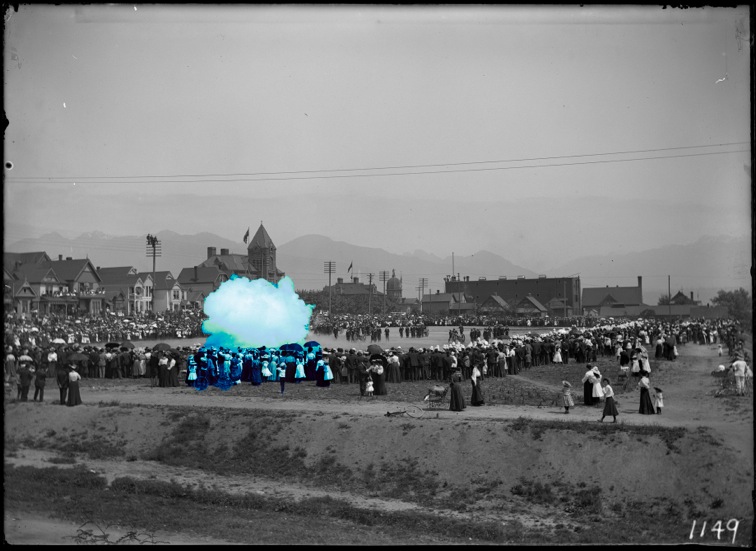THE LARWILL PARK SITE PUBLIC ART PROJECTS
688 Cambie Street, Vancouver
The Larwill Park site has held a truly unique position in the history and landscape of Vancouver. Since being parcelled out with the arrival of the CPR in 1884, this simple and spacious lot was the city’s most frequented—if unofficial— park, serving as a place of gathering, play, and demonstration for Vancouver’s growing population. It was distinct from the rest of what would become downtown Vancouver: as one of very few public parcels of downtown land, even early accounts of the city describe it as a place where public desire, not private ownership, held sway.
Distinguished first as a cricket and lacrosse pitch by early sportsmen, the lot hosted countless demonstrations, jubilees and celebrations, from visits by colonial royalty and military exercises, to goats, a chain gang, riots and fairs. It has acted as a convening space for a diverse range of publics, including First Nations communities and early immigrant labourers, who worked together during times of hardship and transition. Squatting was another common activity that challenged ideas of property ownership and productive use of land, prompting questions about how we live, and how we live with each other.
The site has manifested the potential of unregulated space for this city, facilitating not only public gatherings but also expressions of public emotion. Communal utterances of rage, joy, hope, pride and disappointment— things often unrecognizable in a timeline or historical survey—have been defining factors in the social life of what has come to be known as Larwill Park. This platform for celebration and for protest is now the proposed site of the new Vancouver Art Gallery.
To signal this important transition within the ongoing history of change, the Vancouver Art Gallery commissioned Other Sights to produce two different public art projects at the Larwill Park site over a two year period: The Inaugural Project, by Other Sights collective; and Ovoidism by Lawrence Paul Yuxweluptun.
Photo: Military drill on Cambie Grounds, c.1902. Photo: Philip Timms, Collection of Vancouver Public Library Special Collections.
Related Links
OVIODISM [LAWRENCE PAUL YUXWELUPTUN]
